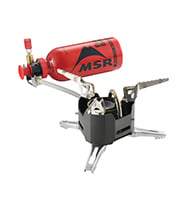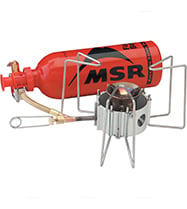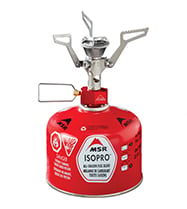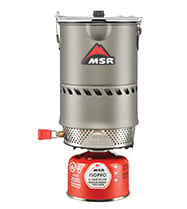How MSR’s Early Research on Climber Hydration Sparked a Revolution
Today we know that climbers must stay properly hydrated in order to operate well at altitude. But the research on climber hydration was still in its infancy in the 60s and early 70s. Out in Seattle, one restless climber was starting to discover the connection on his own as he climbed Mt. Rainier over and over again. During his climbs, MSR founder Larry Penberthy noticed a correlation between his and other climbers’ hydration levels and how well they felt—and functioned—at altitude.
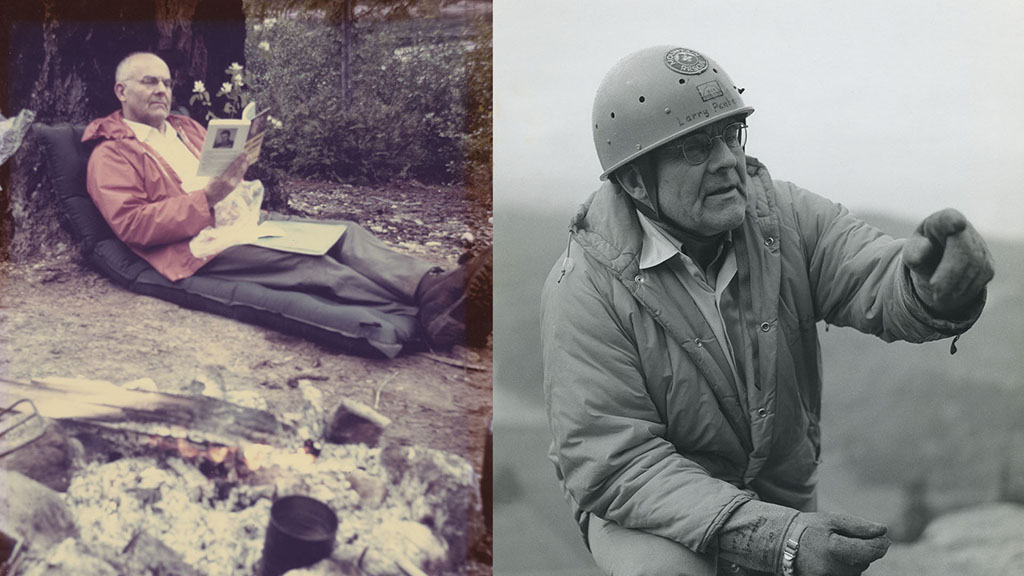
Theorizing that dehydration was the cause of many climber issues, including Acute Mountain Sickness, Penberthy embarked on series of field studies to further research the topic. Not only did his studies raise awareness, but the more he researched, the more Penberthy realized that a new piece of gear needed to be invented—and MSR’s most famous innovation was born.
Field testing stations in the crater of Mt. Rainier
Penberthy noticed that he felt better at altitude some days more than others. To investigate, in the summer of 1972, he and the MSR Climbing Club studied their salt and water needs during four climbs up Rainier. Using ‘chemical tests’, they deduced that their deficiency was indeed water, not salt.
Because climbers’ only form of drinking water is the slow process of snow melting, it can be hard to get all the fluids they need at altitude. Penberthy believed that as a climber’s blood became more acidic, its pH balance was thrown off, which eventually manifested into AMS.
To research his theory, Penberthy set up a medical testing team in the crater of Mt. Rainier so he could study ill climbers “when and where they were sick”.
“All medical work will be done by climbing doctors, but we need about ten climbing Sherpa who will help the doctors up and down the glaciers, build igloos and set up tents, carry equipment and supervise the voluntary exercise test at Camp Muir,” he informed the readers of his Mountain Safety Research newsletter.
He also urged climbers to monitor the pH levels in their urine (by way of test strips) and to report back with their findings.
The National Park Service was apparently on board with Penberthy’s research stations on the mountain. “They are concerned about the considerable number of climbers who become ill on Mt. Rainier,” Penberthy told his readers. “They hope we can find a remedy.”
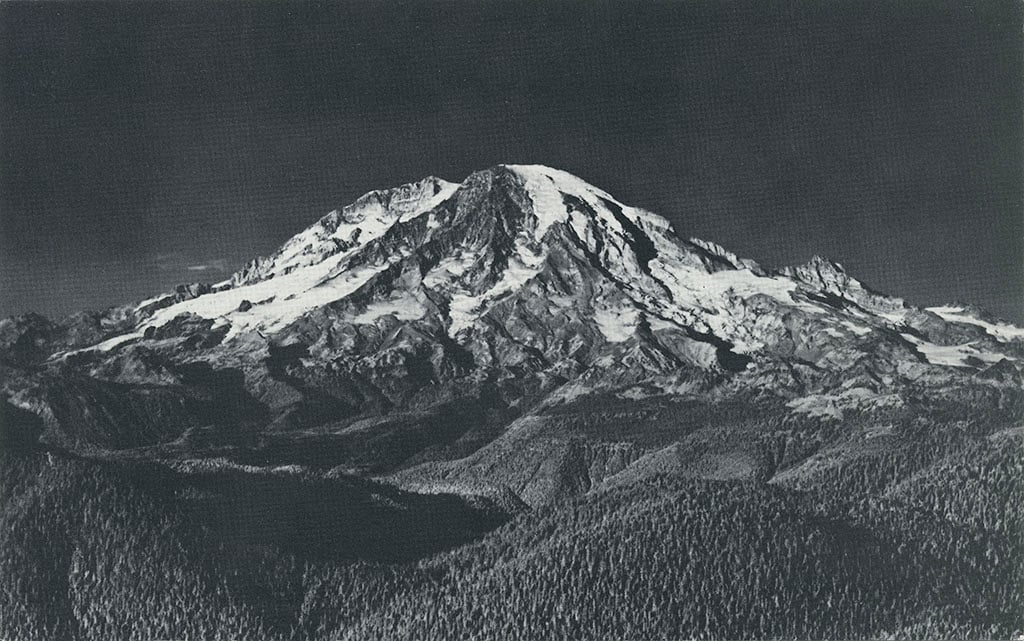
MSR’s Revolutionary Gear Solution
As Penberthy tried to better understand a climber’s biochemistry at altitude, he also realized that a faster stove could play an important role in warding off AMS—speeding up a climber’s ability to make drinking water.
Penberthy went to the drawing board.
He had two primary objectives: a stove with high heat output for speed and absolute reliability even in the most extreme alpine conditions of cold and wind. A failed stove, after all, could cost a climber his or her life.
As Penberthy tested prototypes, he discovered something crucial: the way in which a stove receives its fuel greatly impacts its performance in alpine conditions. While the stoves of the day screwed directly onto their fuel cans, Penberthy went rogue—separating the fuel tank from the burner.
This remote-burner design was revolutionary, bringing with it numerous performance, safety and efficiency benefits.
In 1973 it debuted as MSR’s Model 9 stove, whose DNA is still alive in MSR’s most iconic stoves today.
“Our hottest new item this year is the MSR stove,” Penberthy wrote. “In our testing of stoves on the market, we found problems. As you know, this stimulates us to action and we engineered a lightweight stove to meet those problems.”
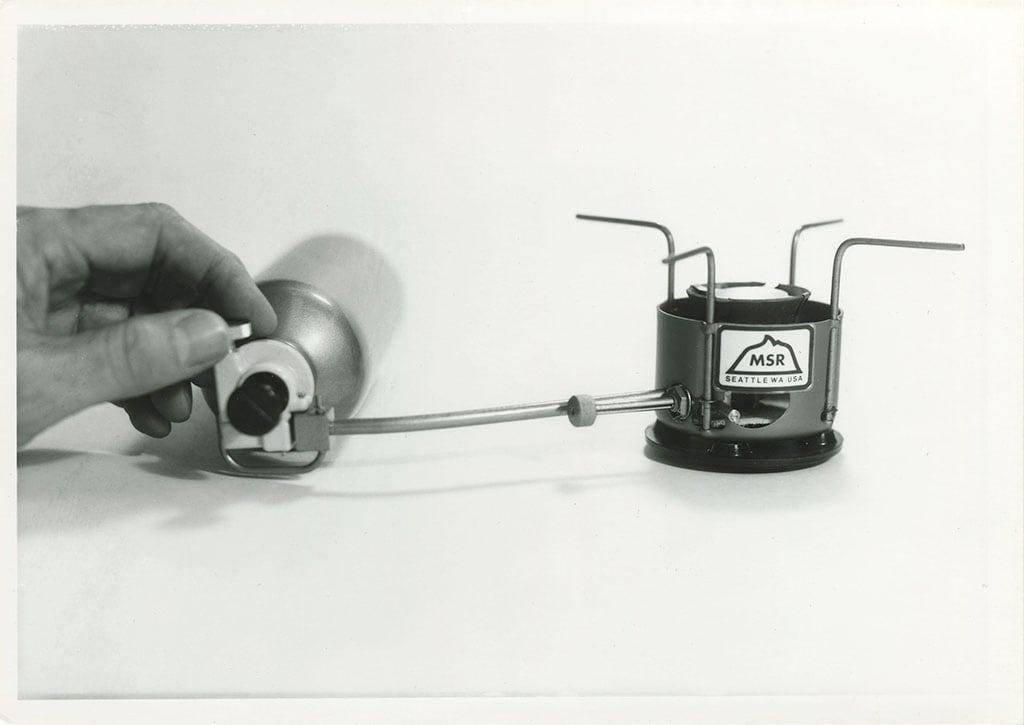
How to Prevent AMS: A Four-Part Cure
As the Model 9 stove gained attention, Penberthy continued investigating a correlation between AMS and pH levels. Many in the climbing community responded to his call, using the test strips and reporting back with their levels. Often they reported a shift toward the acidic side after a few hours of climbing, as well as subsequent ill symptoms.
Penberthy kept his newsletter readers up to date on any discoveries he made, delving at length into the science, as he did with all the gear testing he conducted.
While his studies were far from conclusive, Penberthy was confident enough to recommend this four-part preventative plan for AMS:
- Drink enough fluid to maintain urinary output of about one quart per 24 hours.
- Eat at least three ounces of high carbohydrate food every hour while climbing, plus salt tablets with water if sweating profusely. Eat mixed foods for dinner, at least normally salted.
- Take enough Rolaids or soda-mint tablets to maintain urine pH at 5.5 to 6.5. Use pH test paper for monitoring.
- Report the results, good or bad.
In 1976, 50 summit climbers reported back with good results following this system, expressing they’d experienced “good appetite, good alertness and good general condition”.
A Climber’s Manual on AMS by MSR
After five years of research through on-mountain field studies and extensive reading of medical books, Penberthy authored a 24-page booklet on his AMS findings and field observations.
“Supported by the climbing doctors in the group and a great deal of reading, we have now worked out the biochemistry which we believe explains the field observations,” Penberthy wrote, announcing the booklet in the MSR newsletter.
The small tome outlined the history of his study, his findings, the preventative plan, suggestions for Mt. Rainier climbers—including climbing pace, heart rate and nutrition—and the work still to be done.
Climbers could order it for $3.00 through the newsletter. Written in layman’s terms, it would help them achieve “better alertness and physical ability on Mt. Rainier type climbs,” Penberthy wrote.
A stalwart for safety, Penberthy’s goal was to improve the well-being of his fellow climbers and get to the root of this high-altitude conundrum. His company was, after all, Mountain Safety Research.
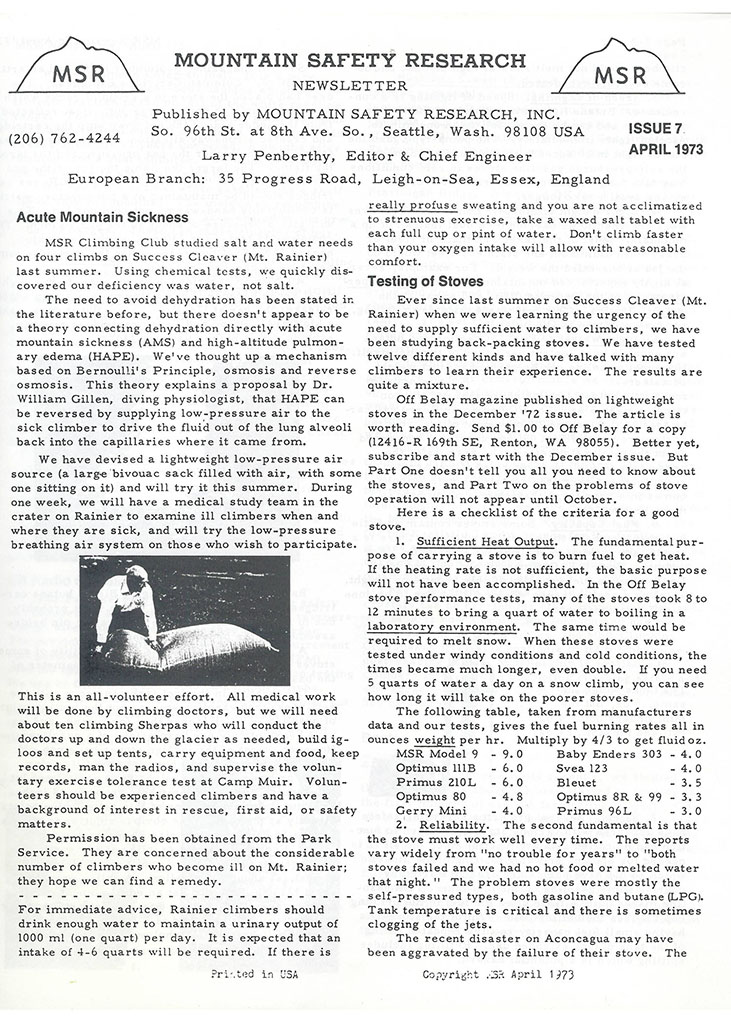
Over 50 years ago, MSR began as one man’s quest to create better, safer, more reliable mountaineering equipment. Today, we’re still an intrepid team that believes in challenging conventions to engineer greater solutions to real-world issues. Along the way, we’ve remained inspired by you—the world’s passionate and unruly dreamers.
Related Posts:
- Flashback: The 1970 MSR Climbing Tower
- 45 Years of Redefining Outdoor Gear Design
- The History & Evolution of the MSR Logo
Updated. Originally Published August 20, 2019.

